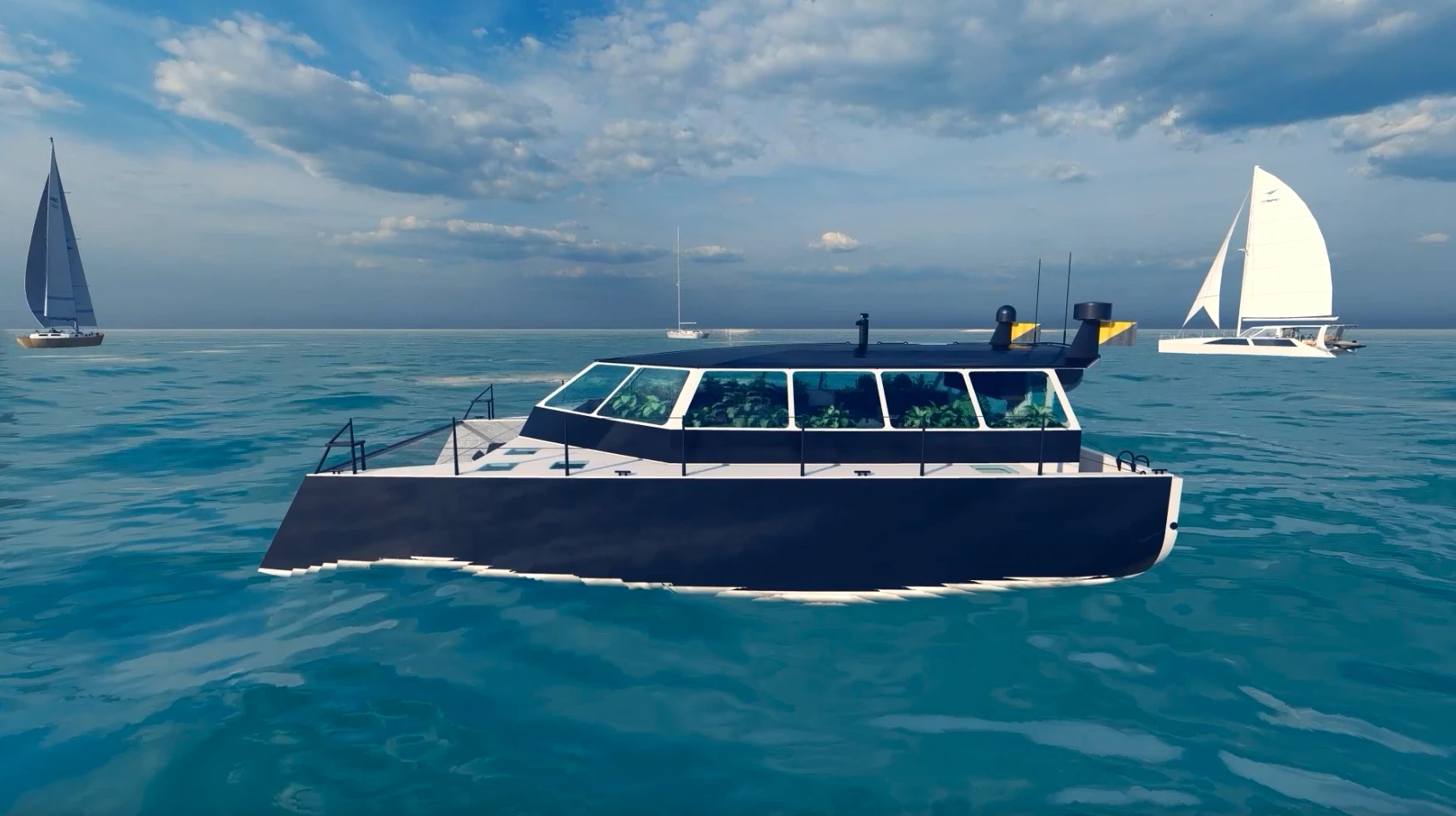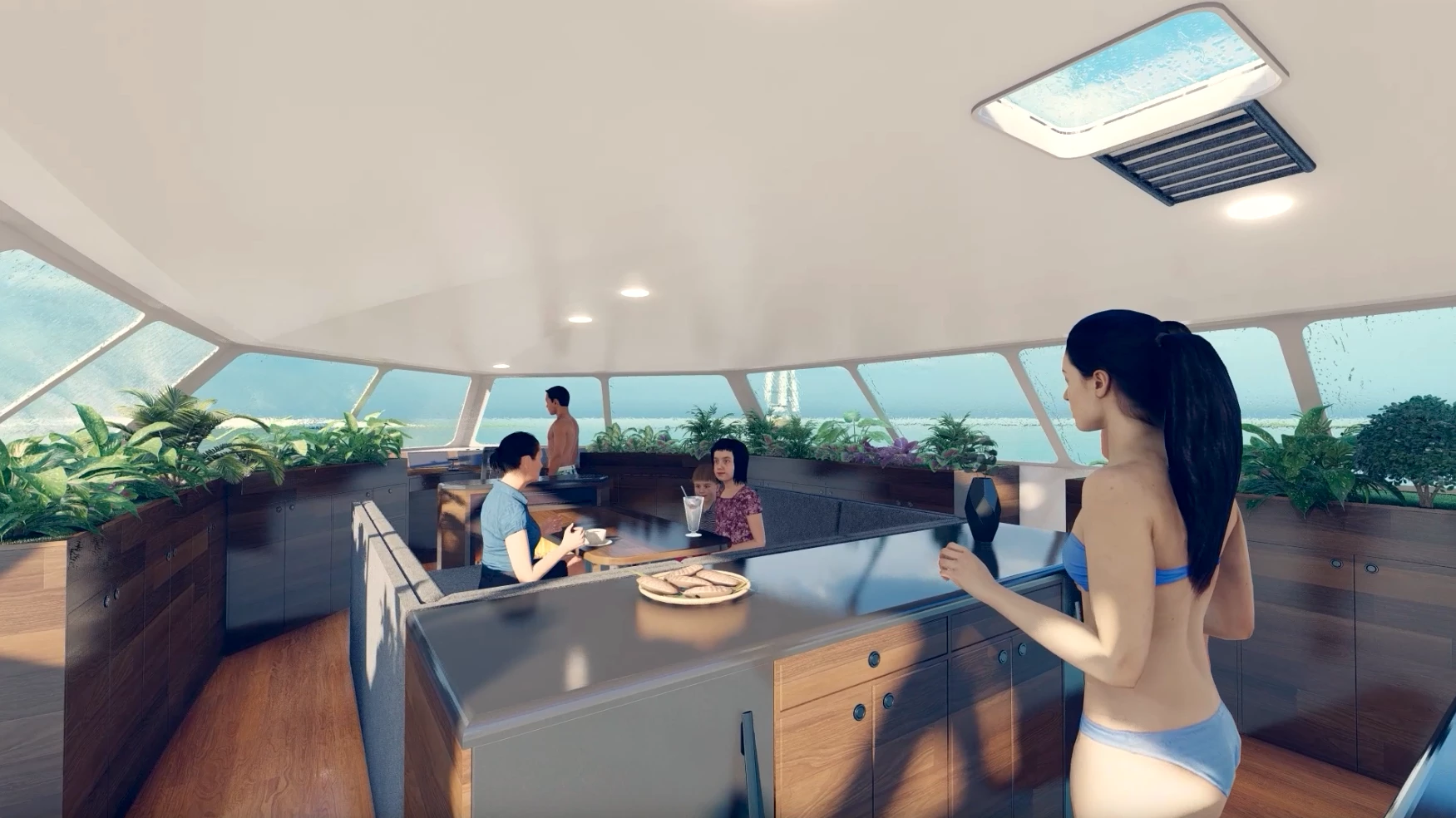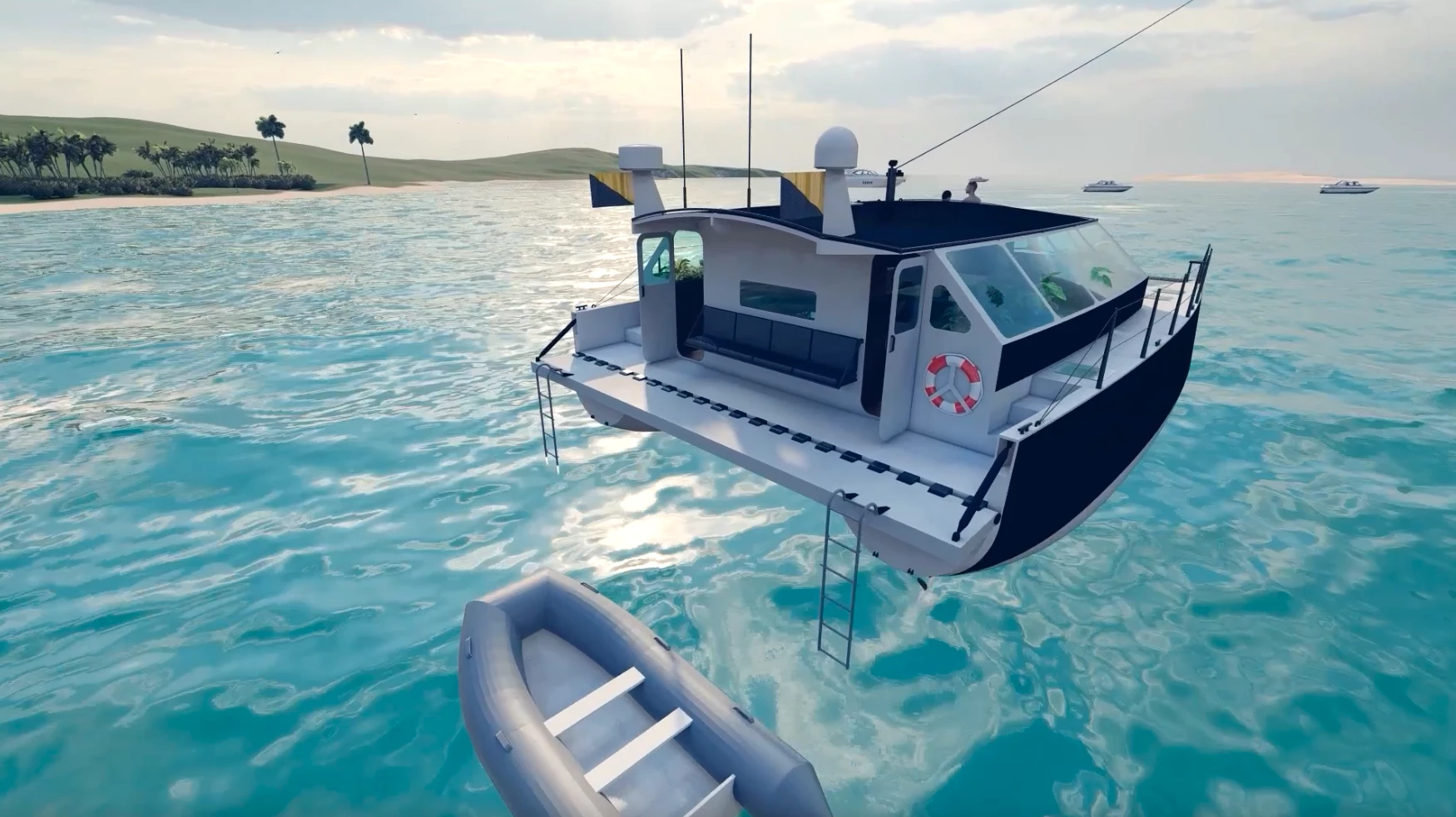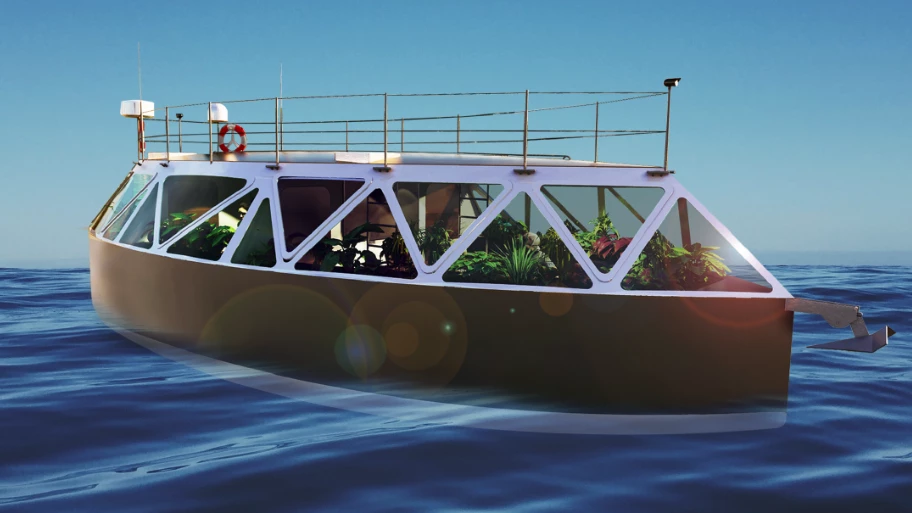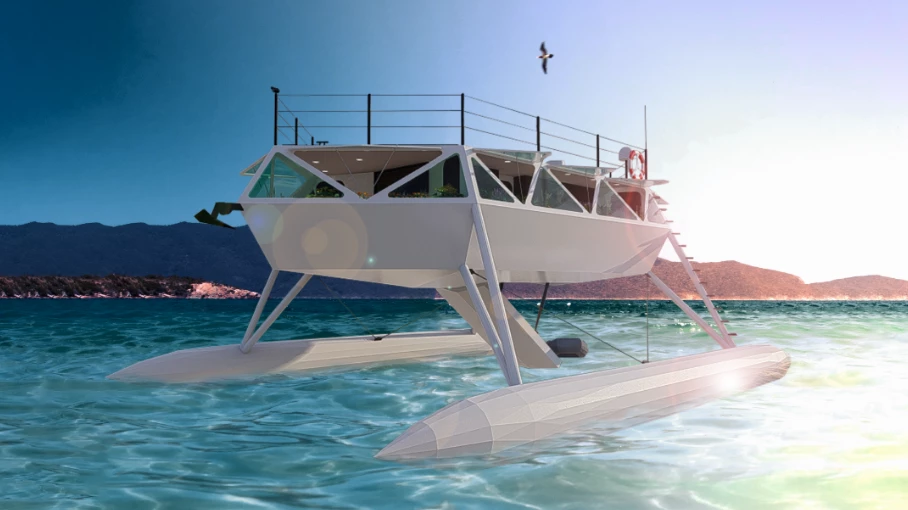Forget about merely living off-grid, the future is all about living offshore ... full-time. At least that's the vision Florida-based yachting startup Sovereign Ships is looking to make reality. More than a mere electric catamaran, its oceangoing Sphinx 40 has been conceived as an on-water homestead capable of producing its own propulsive power, harvesting its own fresh water and growing food, providing all of life's essentials so that owners and guests can truly escape overcrowded land life and float to their hearts' content.
With the likes of pandemics, wars and political animosities running rampant through society and marring everyday life throughout the 2020s, it's not shocking to see someone thinking outside the box in pursuit of a fresh start. Ben Woodason founded Sovereign Ships as a means of advancing a more complete style of escape, and the company looks to further build on the untethered nomadic lifestyle that's become en vogue in recent years.
"I came up with the idea after leaving the Air Force and contemplating what kind of a lifestyle would maximize personal freedom," Woodason explained in launching the company last year. "I kept thinking about all the futuristic sci-fi space travelers that I had seen and decided I could adapt that lifestyle for today by bringing things down closer to earth."
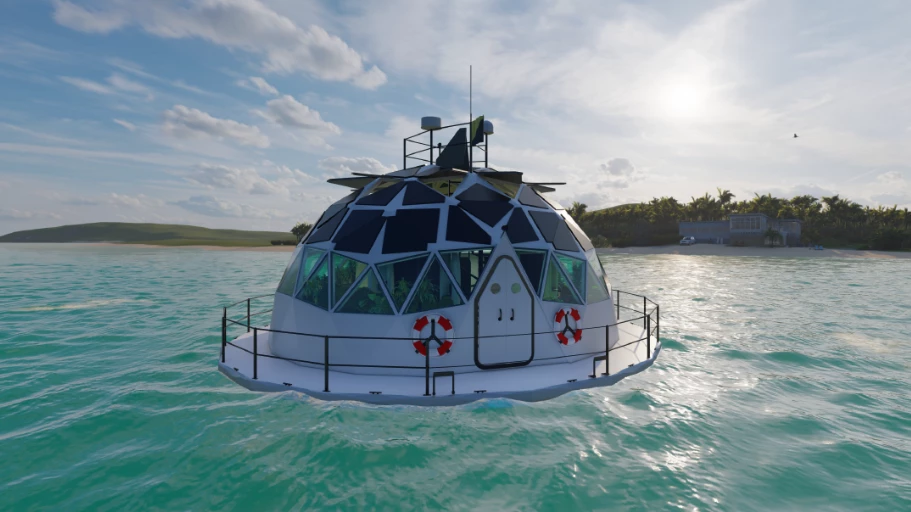
Some of Woodason's initial concepts did indeed look like sci-fi spaceships dropped into the water, but Sovereign has since focused in on more down-to-earth layouts. What Woodason ultimately envisions is a form of fully self-sufficient residential leisure craft that requires minimal contact with the old-fashioned landlubbing masses back on shore.
After mocking up over a dozen different yacht designs for feedback, Sovereign has chosen the Sphinx 40 as the first to pursue. The 40-footer (12.1-m) is designed to accommodate between eight and 10 people in a three- or four-cabin layout. Plans call for an interior galley, a dining area and salon, an onboard office, two heads, and an aft deck that expands via a full drop-down gate – a yacht tailgate, basically. The hull will be made from fiberglass, and the roof will include 728 square feet (68 sq m) of solar panels.
The Sphinx will rely on a battery-electric propulsion system supported by solar charging, available wind turbine generation and a kite sail system. Its sharp dual-hull design aims to assist in stable, efficient cruising.
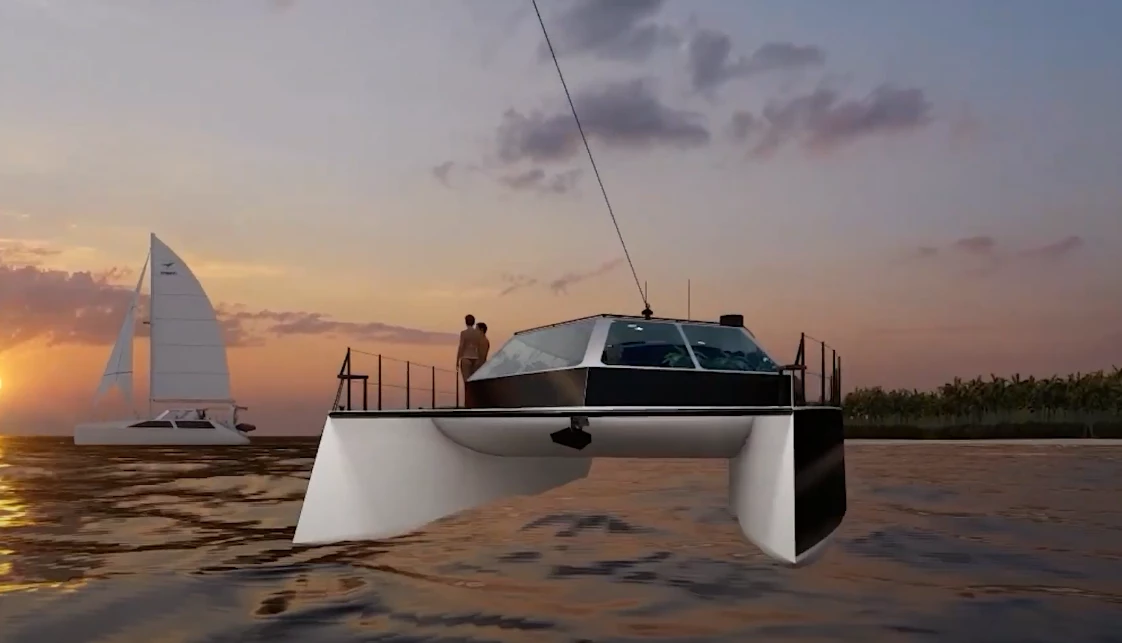
Of course, nomads could travel and live on any boat or yacht with onboard accommodations, and many already do. Where Sovereign really pushes its concept from livable yacht to "self-sufficient oceangoing home" is in its vision of providing for life's basic necessities right on board. Plans call for a combination of rainwater collection and desalination systems to supply fresh water, and a sprawling 97-sq ft (9-sq m) onboard garden for growing food. Composting toilets will help to reduce water usage and reliance on a holding tank.
We're very skeptical that potted plants spread around a boat deck will provide complete onboard sustenance for any length of time, but Sovereign notes that occupants can also fish while out on the water. And though they may have purchased their self-sufficient eco-cat to stay away from land as long as possible, there's nothing stopping owners from heading to port to restock whenever necessary.
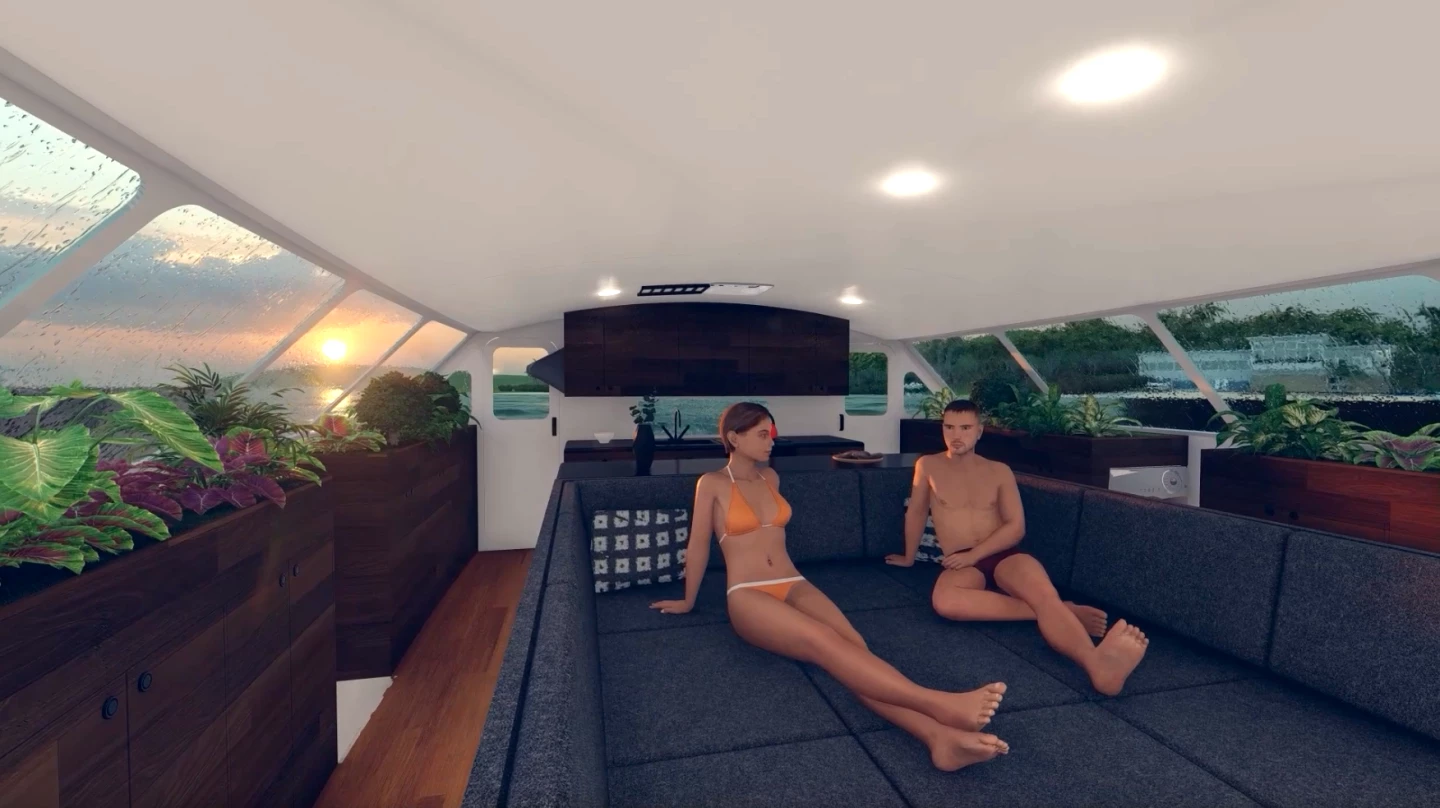
We're filing the Sphinx 40 as "believe it when we see it in real life" for now (remember the Freedom Ship?), but it certainly presents an interesting concept for getting away from civilization and spending time at sea. Sovereign's ideas aren't unprecedented, as there are other yachting vessels, real and conceptualized, with inclusions like solar power, water-making systems and onboard vegetable gardens. However, Sovereign's vision of a seaworthy off-grid residence is more singularly focused than most, an oceangoing spin on the kind of heavily self-sufficient, go-anywhere tiny homes and off-grid RVs that empower owners to quit society cold turkey.
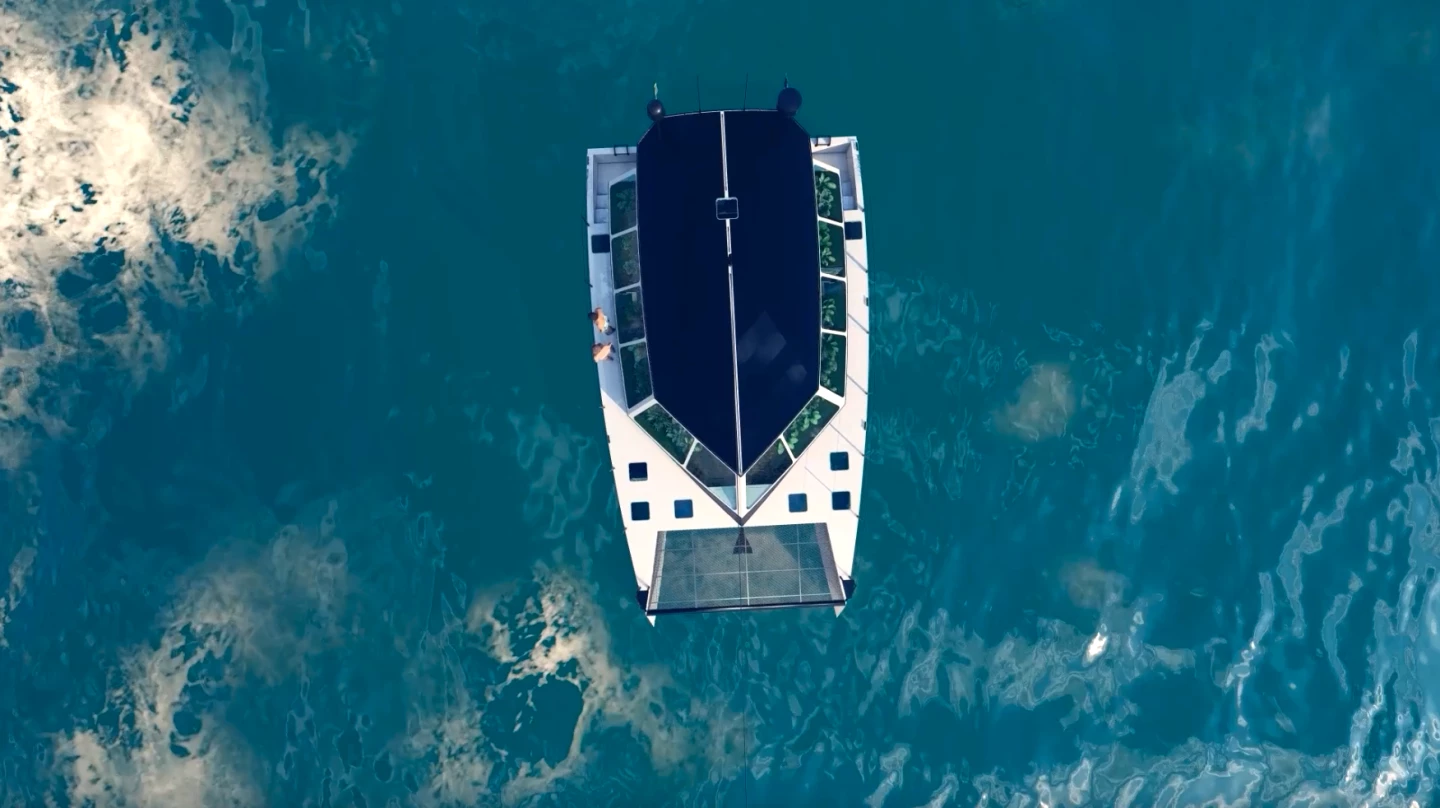
Sovereign is working on a Sphinx 40 proof-of-concept and hopes to begin the first customer deliveries in 2025. Early reservations are available now, and base pricing currently starts at 210 oz of gold (approx. US$430,000 as of publishing) – a universal standard chosen to get buyers thinking with a more freewheeling, autonomous mindset unconstrained by such nuisances as governments and their respective currencies. And gold will definitely work more fluidly than bartering with boat-grown veggies.
Source: Sovereign Ships

